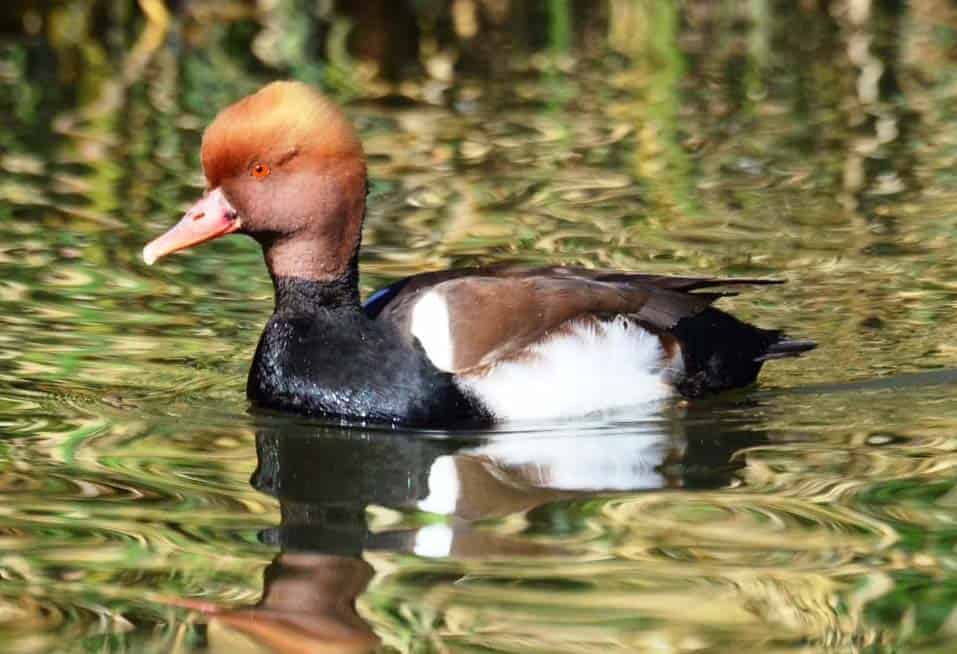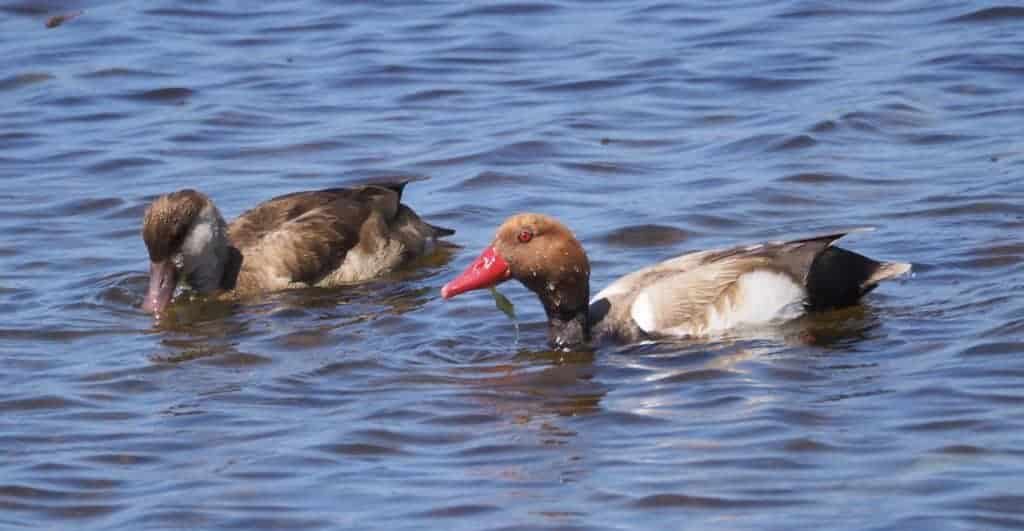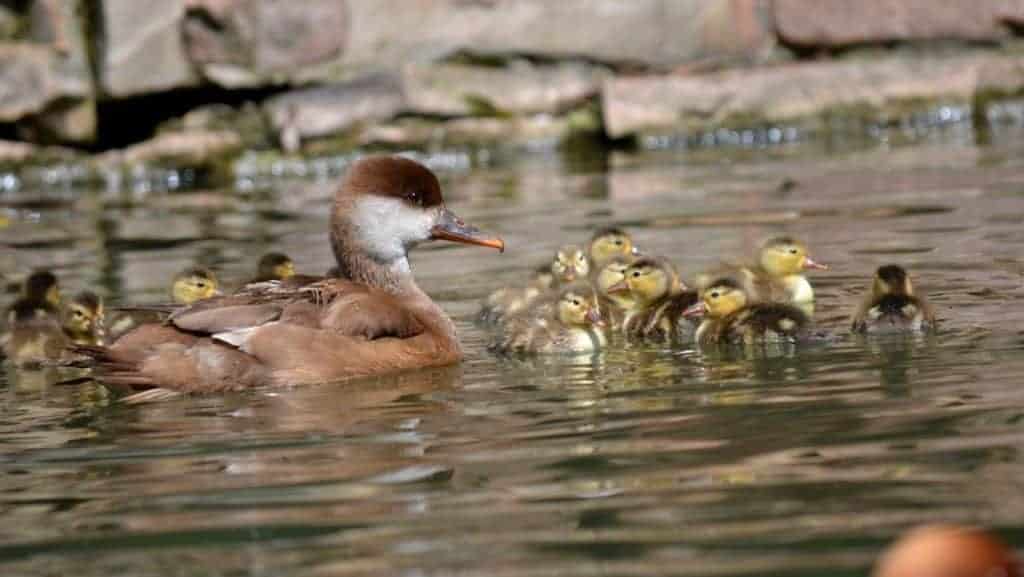Red-crested Pochard


Netta rufina
One of the largest members of the pochard family, the Red-crested Pochard male has a very characteristic red colouration on the head, from which its name is derived. Females are a soft browny-grey, males in eclipse resemble them, but maintain their red bill so they are easily distinguishable. This species breeds in southern Europe and central Asia, migrating south to Africa and the Indian subcontinent in the winter.

Breeding generally occurs on freshwater lakes and steams, where females will select a site near the shore in vegetation. They will forage regularly by diving, dabbling and upending. Red-crested Pochard are primarily herbivores, preferring to eat stems, roots and seeds.
The duck will lay 6 to 14 eggs, which she incubates for 27 days. There are some resident populations of Red crested Pochard around the United Kingdom. Originally thought to be a rare visitor, it is now thought that these are escapees from captive populations, as they are well represented in aviculture.
Share this page